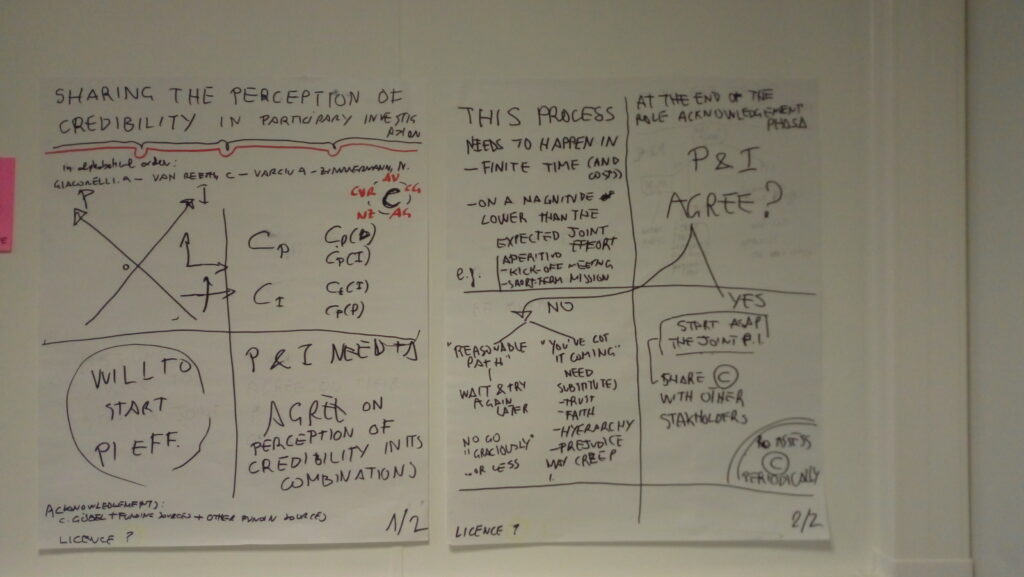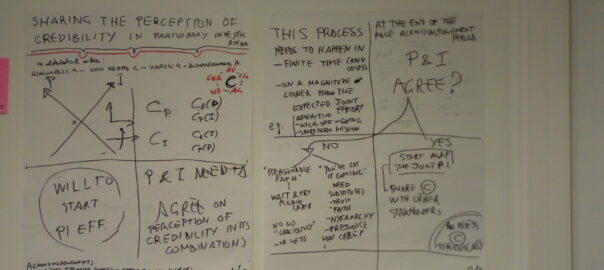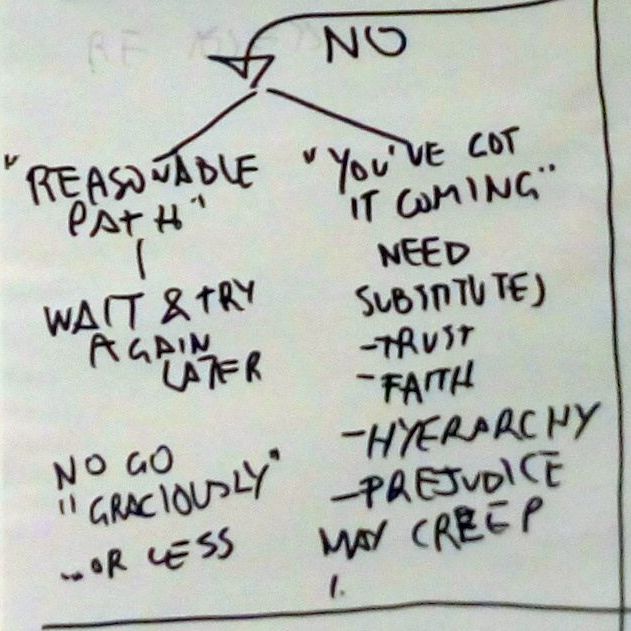DOI: 10.13140/RG.2.2.31544.90884
Recommended soundtrack: Everything is everything.
This is the elaboration of a draft presented live at Noisy-Champs, France, in February 2019. This “live poster” was proposed as a way to formalize a method to share the perception of credibility in participatory investigation.
A full report of the workshop where this poster was presented is here. The report includes the poster, but it might help to add that it was part of the discussion on “trajectories of participatory investigation”. The poster was drafted in about 15 minutes, while other working table rapporteurs were presenting the results of other sub-groups.
The method presented in this poster was considered original and innovative by the participants who provided feedback (in a group of about 25 people, with various roles in research and management of organisations working if the cultural or in the scientific sector).
The full poster is visible in the header of this article, and it is re-pasted at then end. Below we review its various parts.
please note: Examples made in the article are fictional, but inspired by various cases observed working in interdisciplinary and multi-stakeholder projects since 1994. The article has been beer reviewed by various collaborators of the pibinko.org network, and has been accepted for publication on the pibinko.org blog on April 27, 2020.
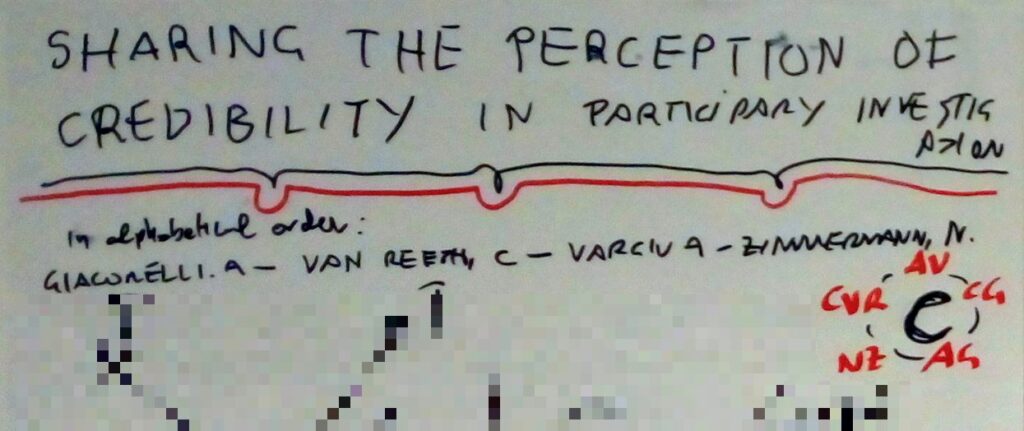
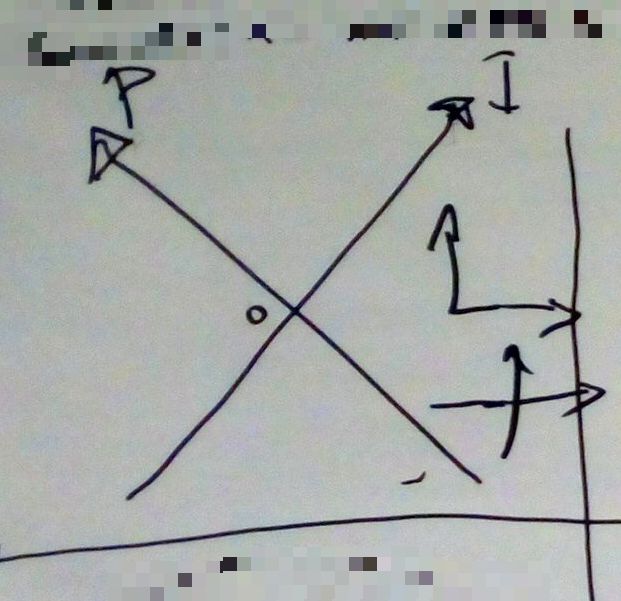
Let us identify two actors. An investigator (I) and a “participator” (P).
Typical investigators are researchers, academics, etc.
Typical “participators” are people who are able to engage other people in coordinated activities. Could be the creator of a rock band, the coach of a village sports union, or the manager of a large event (e.g. an international summit).
We can represent the magnitude of their capability on an axis. The orientation of the axes and the intersection point is to be confirmed (rotate the screen as you see fit)
Examples of “capability” on P and I axes:
- a “zero” Investigator: somebody who does not have a clue about the topic of the investigation
- Investigators with increasing capability: they work on it. At their maximum, they will become Nobel prizes, or have equivalent recognition in their field.
- a “zero” participator : someboedy ho never even invited two friends for a drink
- High-level participators: all greato politicians, Hugh Hefner, etc.
We may also decide if these axes should have an origin on zero, or if negative values should be allowed. If not, how could we represent investigation activities which after years have not produced tangible results at any level of society? And how should we position subjects who discourage relations among people?
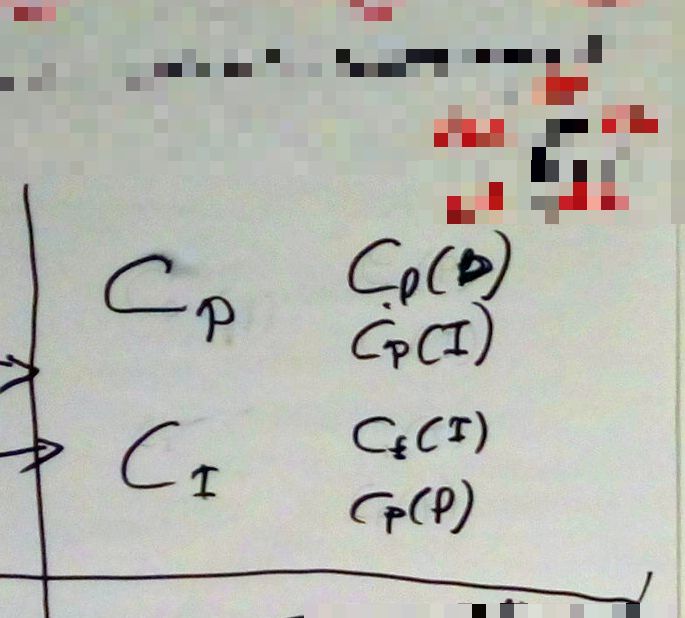
We introduce the concept of credibility.
Credibility must be referred to somebody who perceives it. CP is the credibility perceived by the “participator”; CI is the credibility perceived by the investigator.
The credibility perceived by someone needs to be about something. CP(P) is the credibility of the participator as perceived by him/herself. CP(I) is the credibility of the investigator as perceived by the participator. etc. for CI(I) and CI(P).
Examples:
There is an outreach meeting where researchers propose a participatory investigation activity to be launched in new region. The researchers are explaining the rationale of this effort, and providing some introductory background.
- CI(I): I work for a big research institution. Hence, I am a good researcher. I will enlighten this community with my knowledge. They need us.
- CP(I): These guys should spend more time working at construction sites. I can’t understand a work they are saying.
- CP(I): Hey, these guys come from a university. They must be professors. I will do anything they say because I am a farmer and I don’t have a degree. (while in fact they are PhD candidates on their second year, replacing the actual professor because he had an schedule conflict with a tennis game with his pal).
- CP(P): My father and my grandfather have been on this land, taking water from that stream. We know how it works. Why do we need a “hydrogeologic model” (did I spell it right?)
These statements are fictional…but not far from reality (based on 25 years of attending events with different stakeholder groups in the same room).
There are of course a lot of cases which are less negative, and very much reasonable. But it helps to highlight the “bad cases”.
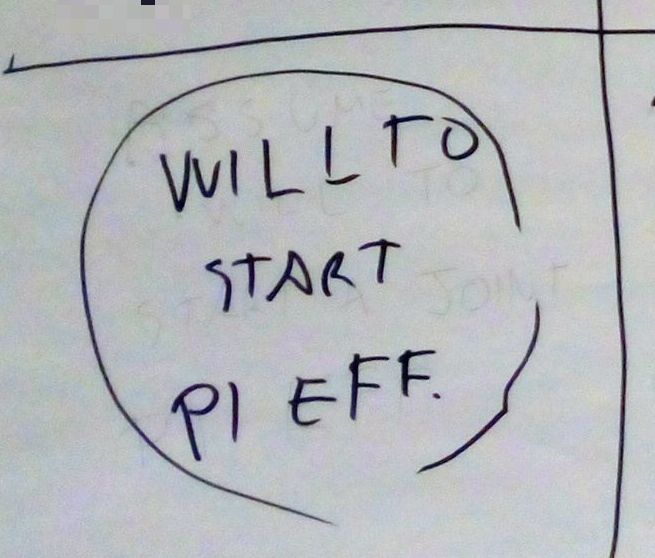
Having introduced these concepts…. A prerequisite condition is that there needs to be a will to start a participatory investigation effort. In absence of this, no need to go further.
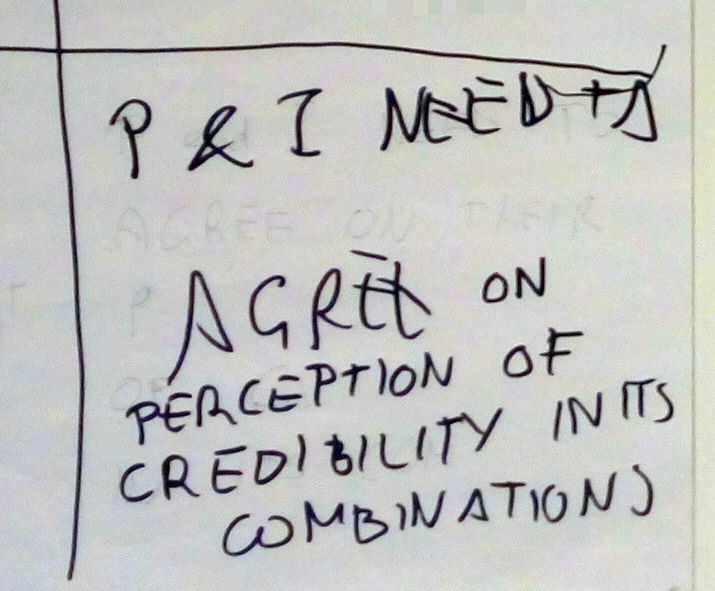
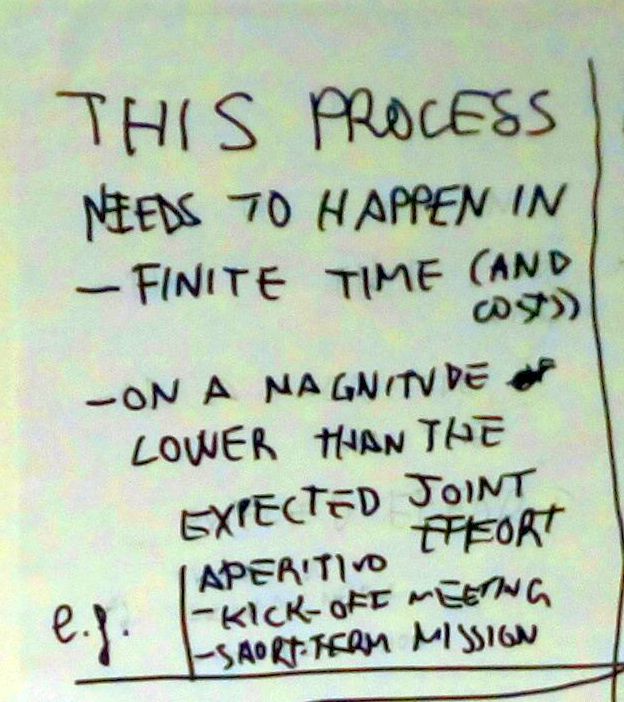
The matching process needs to happen…
- …in a finite time (and using a finite amount of resources)
- …with time and resources on a magnitude order lower than the expected joint effort.
Examples of “perception matching” efforts environments of different magnitude: an aperitif (to decide where we should have a pizza for dinner), a half-day meeting (before launching a utility survey involving subcontractors for two months)…etc.
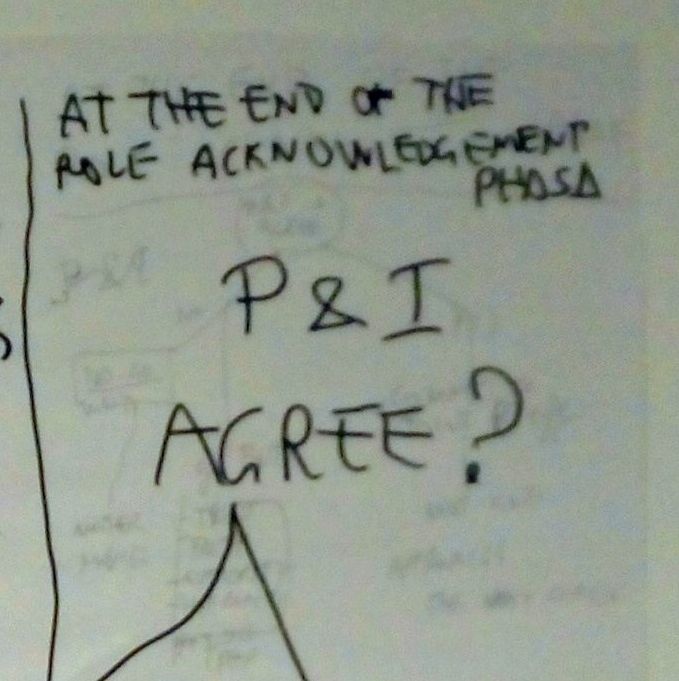
NO. IF P and I do not agree, i.e. CP(I) and CI(I) and/or CP(P) and CI(P) are very different, two two scenarios are possible: (1) the “reasonable path” and (2) the “You’ve got it comin'”.
The “reasonable path”. P&I can agree that when they met was not a good moment and/or setting to trigger a joint effort. They might want to wait and try again in the future. Or they might decide that they have no mutual interest to collaborate in the future. There will be a “no go” by at least one of the two parties (and, as in every relationship, there will always be one with a stronger “no go”). This can be declared more or less graciously.
Gracious “no go”:
[Rainy day – Living room – Franco Califano is on TV. Joe is casually flipping the pages of “Participatory Investigation and Country” Magazine. Phone rings. Joe answers]
Jane: Hi Joe
Joe: Hey Jane, what’s up?
Jane: Remember you invited me to go to the movies to see The Revenge of the Killer Chihuahua and of the Zombies?
Joe: Yep, I got two tickets already. Pick you up at 8…right…?
Jane: Well…you know…I got a really bad headache…maybe next week, ok?
Joe: Jane…that’s fine
Epilogue: Jane goes out with Jack, to see the Palla a 21 from Tuscany to Chicago documentary, and Joe stays at home, watching repeats of Space 1999.
Less gracious “no go” (video example)
The “You had it coming” scenario
…there can also be the case that, in spite of no matching of credibility perception, P&I decide to proceed anyway with the participatory investigation effort. Examples of considerations :
- Hey, we got the funds, anyway.
- Well, I’m not really sure these guys can develop this app, but Roger who is the CTO of a large company told me they’re ok, so they must be ok
In this case, the participator and the investigator have it coming, and they have a shared responsibility in one of these possible situations
The investigation starts. Things will go smooth until they go smooth. But, as in any human activity, issues are bound to happen. At this point, in absence of shared credibility perception, other factors will come into play
- hope (the conclusions of the meeting were not really convincing, let’s hope next time it’s going to be more productive, and that it doesn’t rain during the social dinner)
- re-enforced hierarchy (I am the project coordinator and I have two PhDs and I am the chair of a committe of an international organization, so you do what I say)
- amplified prejudice + trust breach (I remember this guy didn’t feel like he was a good surveyor…well, surely he cooks really bad as well)
- when hope fails… faith (Oh mighty Belushandir, lord of all participatory investigation activities, please make our report be delivered on time)
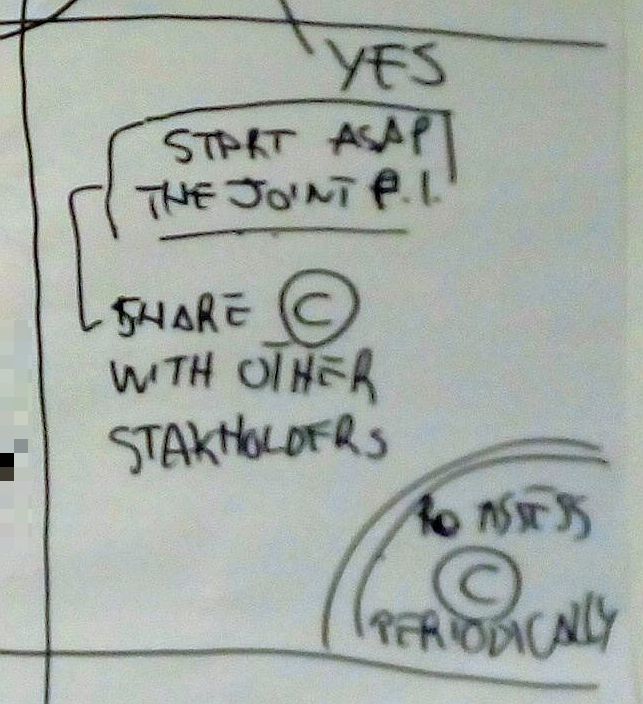
Hopefully, instead, the Participator and the Investigator will find a joint credibility perception condition.
How can this be confirmed? Well…it may not be simple to define it analytically, but there are lots of proxies: emails being answered within 48 hours (rather than 4.8 weeks), capability of greeting your counterparts with a good feeling, willingness to meet again, etc.
At this point, the joint participatory investigation effort should be started ASAP.
The credibility perception should also be conveyed to other stakeholders: issue a joint press release in all languages involved by your project; write a four-hand article (but not for a journal requiring one year for the review process); write it on the walls.
The whole thing should be re-assessed periodically, especially for PI efforts spanning over six months.

This article is published under a still-to-be-defined-but-it’s-going-to-be-open licence.
Putting it together again:
